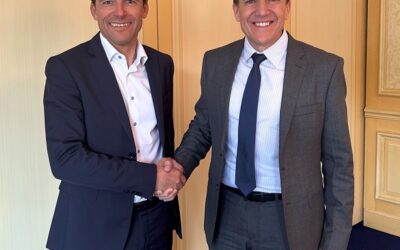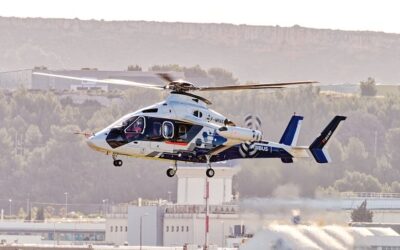Brief summary of key points discussed during KISS2018
Kiel in June might most commonly bring out images of “Kieler Woche,” a large sailing festival set in a quiet town of approximately 240,000 inhabitants in Northern Germany, which each year attracts a total of over 3 million international visitors keen to attend events around culture, sailing, science, politics and industry, to name but a few. But for the Institute for Security Policy Kiel University (ISPK) and the Centre for Naval Analysis (CNA), based in Arlington, Virginia, it is also an opportunity to bring together selected maritime security experts from academia, government, the military, non-governmental organisations and the maritime industry to meet and discuss current and future seapower challenges during the Kiel International Seapower Symposium (KISS).
KISS2018, the second iteration of this intense one-day event, focused on discussing the need for a second Allied Maritime Strategy (AMS 2.0), the fundamental axioms of such a strategy as well as its role in achieving NATO’s strategic aims. Divided in three panels, this year’s symposium also included high-level interventions from Vice Admiral Andreas Krause, Chief of Naval Operations of the German Navy, and Admiral (retired) Mark P. Fitzgerald, US Navy, who both shared their invaluable experience and insights on cooperation at European and NATO level.
The first panel of the day, ‘Making the Case for a New Allied Maritime Strategy’, addressed the need for a new AMS in light of growing threats and challenges within a changing security environment. This session brought about very interesting debates on two key points.
Firstly, there was a real sense of questioning who the key players are, both in terms of NATO allies and in relation to potential threats. The issue of the US turning its attention away from Europe to other world regions, such as the Asia Pacific (APAC), was heavily debated, with a sense that this began under President Barak Obama with the ‘Pivot to Asia’ policy and continued with President Donald Trump with his fierce criticism of the division of ‘labour,’ capabilities and funds within NATO. There were numerous interventions, however, seeking to prove that US attention to the APAC region did not mean the country was pulling away from its European allies; the latest US defence, security and maritime strategic documents prove this, and it is key to dissociate them from Trump’s rhetoric in his Tweets. This led to engaging debates on where threats to NATO allies might come from. Indeed, while Russia may at times be seen as a regional, rather than international, power, its actions continue to worry European allies; but one must not forget the increasing military assertiveness of China, and the significant investments being made to modernise and strengthen the People Liberation Army’s Navy (PLAN).
Secondly, while the case for an AMS 2.0 was not necessarily strongly made, there was a real sense during this first panel that NATO allies need to address a number of key issues before moving on to implementing (or changing) the AMS. These include reassessing the nature of the challenges, such as depleting naval forces and financial constraints, build a better understanding of who the key players are both in terms of allies and threats, and leveraging new technologies in order to address those threats more efficiently.
The second panel, ‘Common Goals and National Caveats,’ sought to discuss strategic goals of NATO and its partners, what contributions the AMS 2.0 can make in achieving these aims, as well as the caveats that need to be addressed. This session focused significantly on strategy, ways and means necessary to implement an AMS.
Perhaps tellingly, there was consensus during this panel that in the face of changing threats and challenges, NATO needs to refocus its efforts on defining a coherent and comprehensive strategy. Democratically elected politicians, it was argued, have very short horizons due to the limited duration of their terms, and often maritime policy is relegated far behind other priorities because it is much more difficult to ‘sell’ to citizens. A lack of prioritisation at national level inevitably results in a lack of prioritisation at NATO level as well, for the alliance can only move as fast as its slowest ally, therefore making it difficult to strategize.
It was argued that there is currently not necessarily a need for a second AMS; rather, what is needed is for NATO allies to focus their efforts on improving ways and means to implement the first AMS. This includes not only finding ways to do more with less in view of budgetary constraints (and perhaps leveraging new technologies as noted previously), but also shifting away from the expeditionary focus of the forces developed during the post Cold War years to bring back a culture of readiness. It is also crucial to continue improving the command structure to facilitate coordination and, consequently, quick decision-making on the basis of increased awareness. The European Union (EU) was brought back into the conversation on this point, highlighting the fact that by virtue of its political nature, it has been working on gathering member states’ political will around an action plan to implement its own maritime security strategy. Although there are still significant gaps in the cooperation between EU and NATO, there are also important lessons to be learnt and shared from different missions (such as Operation ATALANTA) to pave the way for better strategy, ways and means for AMS 2011.
The third panel, ‘Warfighting First – Then What?,’ aimed at questioning the established understanding of (military/maritime/naval) strategy, the correlation between ends, ways and means, as well as the amount of appreciation for ‘secondary’ naval roles.
This panel raised critical debates on the roles of navies: is their primary role war fighting or are they a diplomatic tool? Interventions during this panel sought to challenge common definitions used to define navy roles, including the distinction between war and peace, which can at times be difficult to define, what is understood by ‘naval diplomacy’, whether it is a matter of strategic messaging between different maritime actors on the world stage or does it encompass varying degrees of engagement, and where does deterrence lie on the spectrum between war fighting and naval diplomacy. While there was general agreement, ultimately, that navies are essentially meant to carry out three key tasks (war fighting, diplomacy and constabulary), the balance between these tasks was subject of great debates. Questions were raised as to whether the fact that they have been providing increasing support for constabulary tasks has translated into a loss of expertise in other areas, or whether navies’ inherent flexibility means that they are originally meant to carry out a wide range of tasks, so long as they are well balanced.
Ultimately this panel raised more questions than it sought to answer, which was perhaps its intended purpose in the first place, but the questions it raised undoubtedly lie at the basis of what was discussed in previous panels: NATO’s AMS can only be effective if there is a clear sense of what role navies are expected to play on the maritime world stage; only once this has been defined can the strategy, ways and means necessary to achieve the prioritised goals and objectives be determined.
This feeds into the concerns, voiced repeatedly throughout the day, that navies need to bring back a culture of readiness for three-dimensional warfare (anti-submarine, anti-surface and anti-air), as opposed to the focus on expeditionary warfare absent a sea-control challenger that has dominated the last 30 years. It is also crucial that NATO allies work on building a better awareness picture, both in terms of who the allies and the threats are, which might be different according to where one sits on the world stage but which will certainly contribute to greater efficiency and coordination at allied level. Perhaps, indeed, there are synergies to be built and lessons to be learnt between the EU and NATO: cooperation between these two can be a great force multiplier if it focuses on generating readiness rather than consuming readiness (I.e. Spreading themselves thin).
Whereas this conference sought to address strategic ends, KISS2019 and KISS2020 will focus on the means and ways key to implement NATO’s maritime strategy. These events are organised by ISPK’s Center for Maritime Strategy & Security (CMSS) and form part of the Kiel Seapower Series. Kiel, with its chequered naval history and rich maritime feel, has quickly become a beacon for critical maritime strategic thinking and analysis, driven by a team of young and motivated thought-leaders.
Dr. Alix Valenti
























